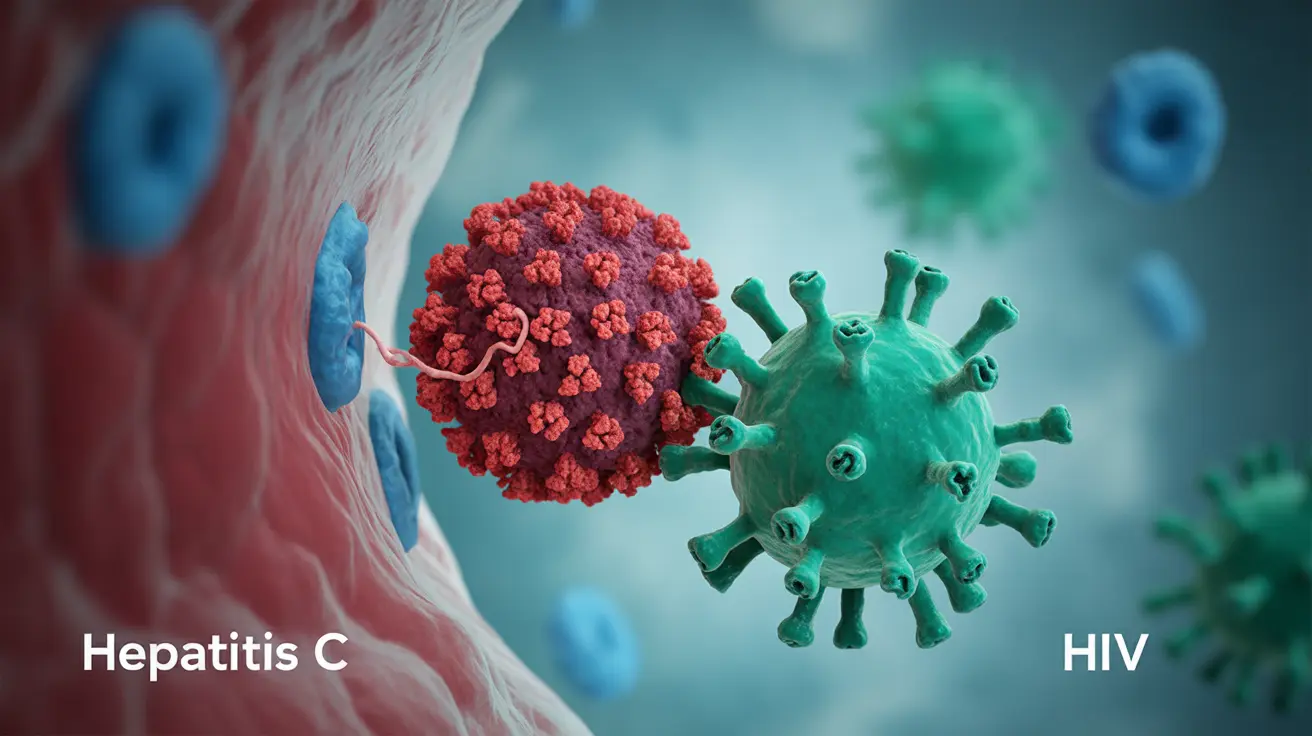Many people have questions about the relationship between hepatitis C (HCV) and HIV, particularly regarding how these viruses interact and affect each other. While both are serious viral infections, it's crucial to understand that they are distinct diseases with different causes and treatments. This article will address common concerns about these infections and provide clear, accurate information about their connection.
The Relationship Between Hepatitis C and HIV
First and foremost, it's important to understand that hepatitis C cannot "turn into" HIV. They are completely different viruses that affect the body in distinct ways. While someone can have both infections simultaneously (known as coinfection), one virus cannot transform into the other.
Hepatitis C primarily affects the liver, while HIV targets the immune system. However, these infections often occur together because they share similar transmission routes and risk factors.
Transmission and Risk Factors
Understanding how these viruses spread is crucial for prevention and awareness. Both hepatitis C and HIV can be transmitted through:
- Sharing needles or injection drug equipment
- Blood-to-blood contact
- High-risk sexual behaviors (though hepatitis C is less commonly transmitted sexually)
- Mother-to-child transmission during pregnancy or childbirth
Common Risk Factors
Several behaviors and circumstances can increase the risk of acquiring both infections:
- Injection drug use with shared equipment
- Unprotected sex with multiple partners
- Receiving blood transfusions before 1992 (for hepatitis C)
- Healthcare exposures in settings with inadequate infection control
Health Impacts of Coinfection
When someone has both hepatitis C and HIV (coinfection), managing their health becomes more complex. HIV can accelerate the progression of liver disease caused by hepatitis C, making it crucial to treat both conditions effectively.
Complications of Coinfection
People with both infections may experience:
- Faster progression of liver disease
- Higher viral loads of both viruses
- More challenging treatment responses
- Increased risk of liver-related complications
Treatment Approaches
Modern medicine has made significant advances in treating both infections. Treatment typically involves:
- Antiviral medications for hepatitis C (usually taken for 8-12 weeks)
- Antiretroviral therapy (ART) for HIV (ongoing treatment)
- Regular monitoring of both conditions
- Management of potential drug interactions
Prevention Strategies
Preventing infection with either virus involves several key strategies:
- Never sharing needles or injection equipment
- Using protection during sexual activity
- Getting tested regularly if you have risk factors
- Seeking medical care immediately after potential exposure
Frequently Asked Questions
Can hepatitis C infection turn into HIV or cause HIV? No, hepatitis C cannot turn into HIV or cause HIV infection. They are completely different viruses that cause distinct diseases. While someone can have both infections at the same time, one cannot transform into the other.
How are hepatitis C and HIV transmitted, and what behaviors increase the risk of getting both? Both viruses are primarily transmitted through blood-to-blood contact, sharing injection equipment, and high-risk sexual behaviors. Using shared needles, having unprotected sex with multiple partners, and exposure to contaminated blood products are the main risk factors.
What are the health risks and complications of having both hepatitis C and HIV at the same time? Coinfection can lead to accelerated liver disease progression, higher viral loads, more complicated treatment responses, and increased risk of liver-related complications. HIV can make hepatitis C progress faster than it would in someone without HIV.
How is coinfection with hepatitis C and HIV treated, and are there special considerations for treatment? Treatment involves managing both infections simultaneously with specific antiviral medications for hepatitis C and antiretroviral therapy for HIV. Healthcare providers must carefully monitor drug interactions and adjust treatments accordingly.
What steps can I take to prevent getting both hepatitis C and HIV, especially if I use injection drugs or have high-risk sexual behaviors? Key prevention steps include never sharing needles or injection equipment, using protection during sexual activity, getting regular testing, and seeking immediate medical care after potential exposure. If you use injection drugs, access clean needle programs when available.




